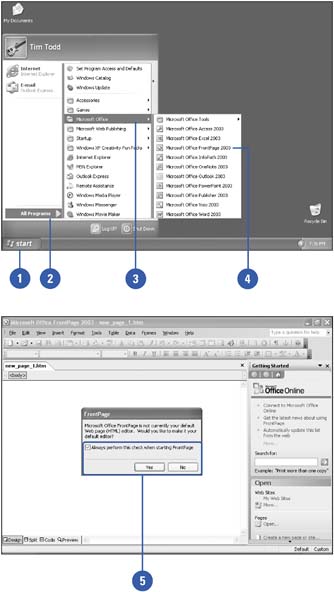Starting FrontPage
When you first open FrontPage, the program window opens, displaying a blank new page, menus, toolbars, and a taskbar. The Title bar across the top of the screen contains the program and Web site name, with the Menu bar directly below it, and the Standard and Formatting toolbars below the Menu bar. The task pane provides options that relate to the current task. The View tabs—which offer access to Design, Split, Code, and Preview modes—occupy a small area at the bottom of the screen. These tabs allow you to view pages from different perspectives; the program's default is Design view.
Start FrontPage Using the Start Menu
 | Click the Start button on the taskbar. |
 | Point to All Programs. |
 | Click Microsoft Office. |
 | Click Microsoft Office FrontPage 2003. |
 If a message alert appears, asking you to make FrontPage your default editor, clear the Always Perform This Check When Starting FrontPage check box, and then click Yes or No. If a message alert appears, asking you to make FrontPage your default editor, clear the Always Perform This Check When Starting FrontPage check box, and then click Yes or No.
The first time you start an Office program, an Activation Wizard opens; follow the instructions to activate the product.

|
You should close the blank page before creating a new site.
Before you begin working on a new site, close the blank page that opens when you start FrontPage 2003. If you don't, it will be added automatically as the first page of your Web site. |
|